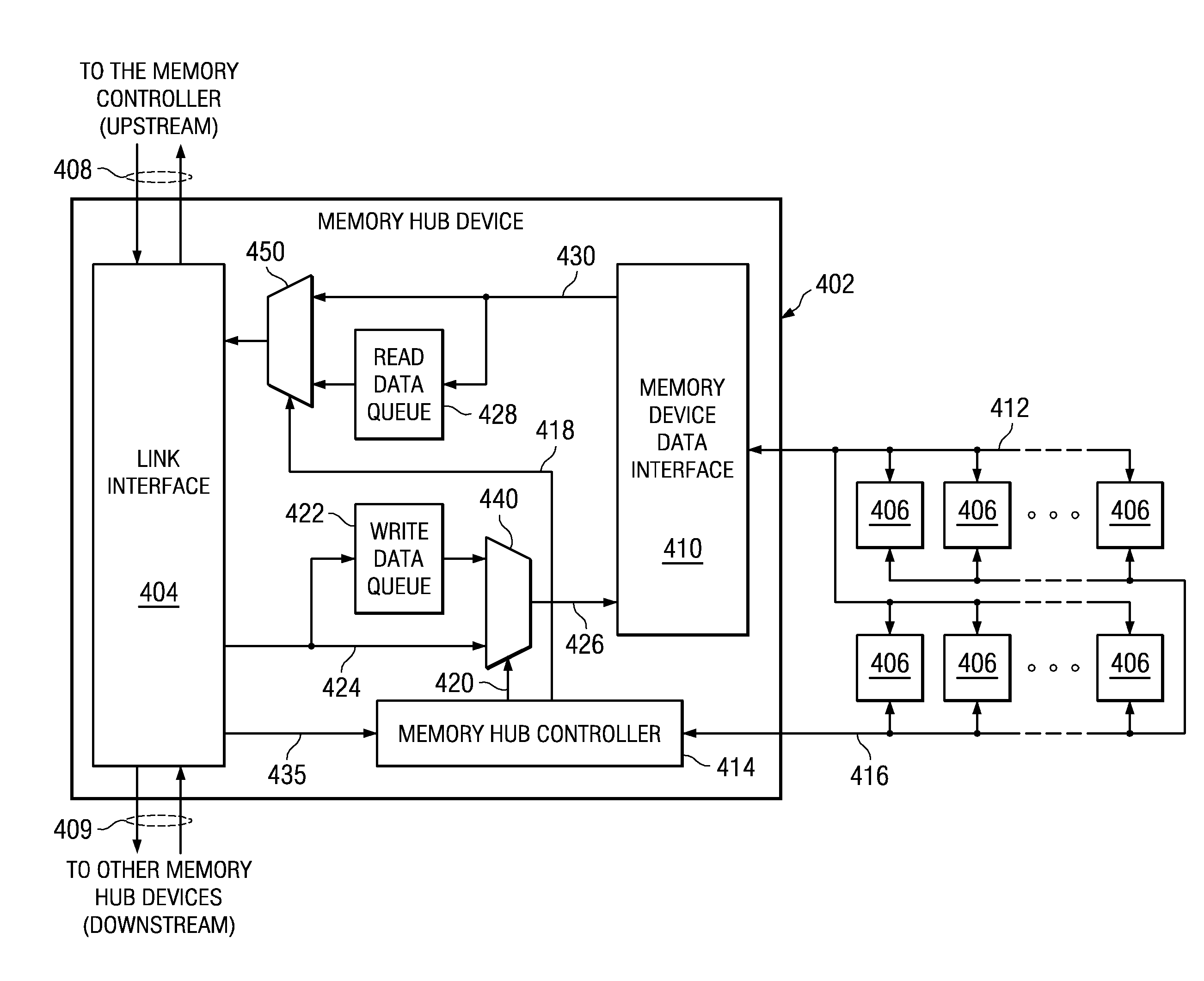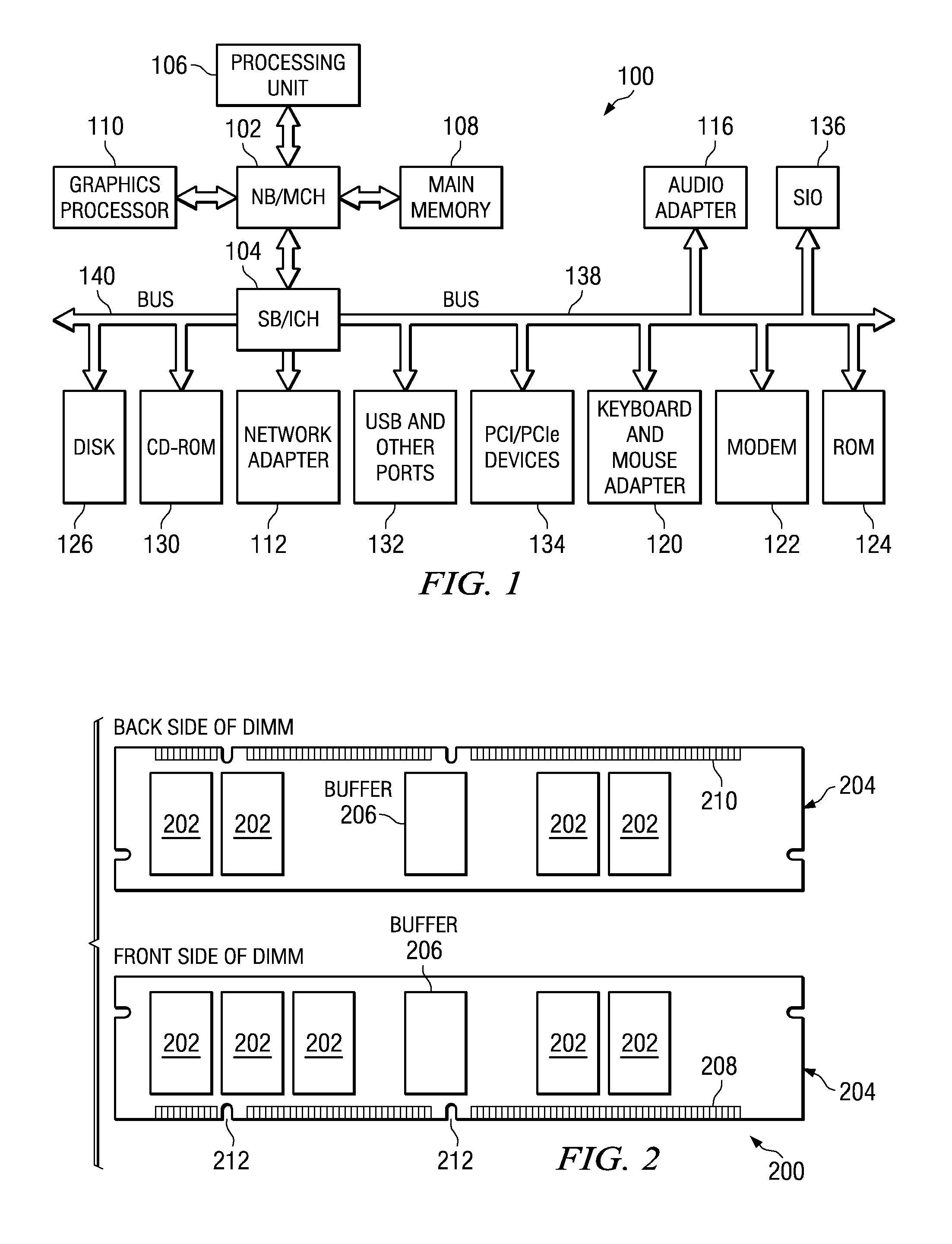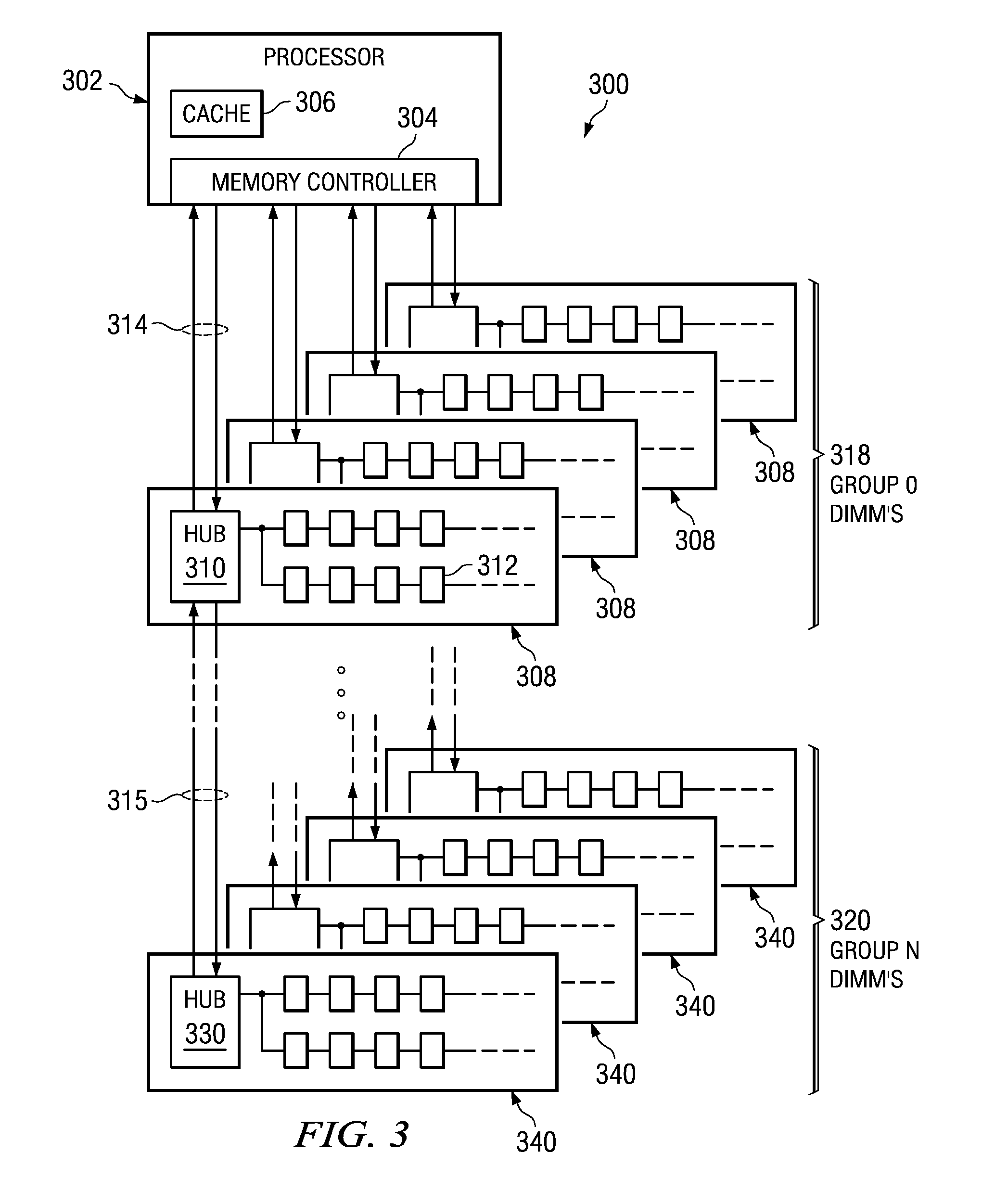System to Increase the Overall Bandwidth of a Memory Channel By Allowing the Memory Channel to Operate at a Frequency Independent from a Memory Device Frequency
a technology of memory channel and overall bandwidth, which is applied in the field of data processing system and method, can solve the problems of lower performance, lower bandwidth, and higher latency, and achieve the effects of reducing latency, increasing the available bandwidth of memory channel, and reducing bandwidth
- Summary
- Abstract
- Description
- Claims
- Application Information
AI Technical Summary
Benefits of technology
Problems solved by technology
Method used
Image
Examples
Embodiment Construction
[0026]The illustrative embodiments provide mechanisms for a fully asynchronous interface within a memory hub device that breaks the link between the operating frequency of the memory channel and the operating frequency of the memory devices. As such, the mechanisms of the illustrative embodiments may be used with any of a number of different types of data processing devices and environments. For example, the memory subsystem of the illustrative embodiments may be utilized with data processing devices such as servers, client data processing systems, stand-alone data processing systems, or any other type of data processing device. Moreover, the memory subsystems of the illustrative embodiments may be used in other electronic devices in which memories are utilized including printers, facsimile machines, storage devices, flash drives, or any other electronic device in which a memory is utilized. In order to provide a context for the description of the mechanisms of the illustrative embo...
PUM
 Login to View More
Login to View More Abstract
Description
Claims
Application Information
 Login to View More
Login to View More - R&D
- Intellectual Property
- Life Sciences
- Materials
- Tech Scout
- Unparalleled Data Quality
- Higher Quality Content
- 60% Fewer Hallucinations
Browse by: Latest US Patents, China's latest patents, Technical Efficacy Thesaurus, Application Domain, Technology Topic, Popular Technical Reports.
© 2025 PatSnap. All rights reserved.Legal|Privacy policy|Modern Slavery Act Transparency Statement|Sitemap|About US| Contact US: help@patsnap.com



